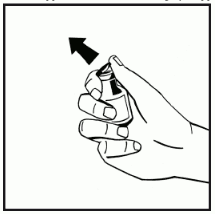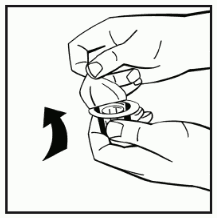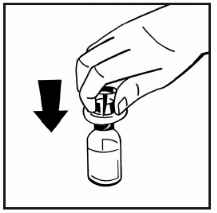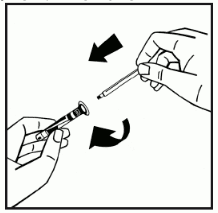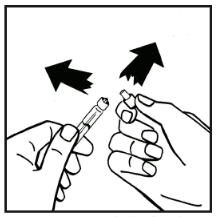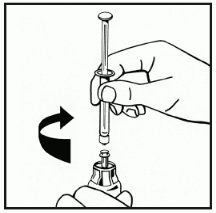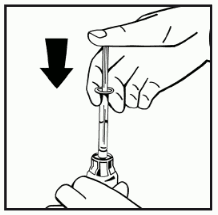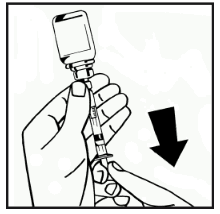VIHUMA Powder and solvent for solution for injection Ref.[49914] Active ingredients: Coagulation factor VIII
Source: European Medicines Agency (EU) Revision Year: 2022 Publisher: Octapharma AB, Lars Forssells gata 23, 112 75 Stockholm, Sweden
4.1. Therapeutic indications
Treatment and prophylaxis of bleeding in patients with haemophilia A (congenital factor VIII deficiency).
Vihuma can be used for all age groups.
4.2. Posology and method of administration
Treatment should be under the supervision of a physician experienced in the treatment of haemophilia.
Treatment monitoring
During the course of treatment, appropriate determination of factor VIII levels is advised to guide the dose to be administered and the frequency of repeated infusions. Individual patients may vary in their response to factor VIII, demonstrating different half-lives and recoveries. Dose based on bodyweight may require adjustment in underweight or overweight patients. In the case of major surgical interventions in particular, precise monitoring of the substitution therapy by means of coagulation analysis (plasma factor VIII activity) is indispensable.
When using an in vitro thromboplastin time (aPTT)-based one stage clotting assay for determining factor VIII activity in patients' blood samples, plasma factor VIII activity results can be significantly affected by both the type of aPTT reagent and the reference standard used in the assay. Also there can be significant discrepancies between assay results obtained by aPTT-based one stage clotting assay and the chromogenic assay according to Ph. Eur. This is of importance particularly when changing the laboratory and/or reagents used in the assay.
Posology
The dose and duration of the substitution therapy depend on the severity of the factor VIII deficiency, on the location and extent of the bleeding and on the patient’s clinical condition.
The number of units of factor VIII administered is expressed in International Units (IU), which is related to the current WHO concentrate standard for factor VIII products. Factor VIII activity in plasma is expressed either as a percentage (relative to normal human plasma) or preferably in International Units (relative to an International Standard for factor VIII in plasma).
One International Unit (IU) of factor VIII activity is equivalent to the quantity of factor VIII in one mL of normal human plasma.
On-demand treatment
The calculation of the required dose of factor VIII is based on the empirical finding that 1 International Unit (IU) factor VIII per kg body weight raises the plasma factor VIII activity by approximately 2% of normal activity or 2 IU/dL. The required dose is determined using the following formula:
Required units = body weight (kg) x desired factor VIII rise (%) (IU/dL) x 0.5 (IU/kg per IU/dL)
Expected factor VIII rise (% of normal) = 2 x administered IU / body weight (kg)
The amount to be administered and the frequency of administration should always be oriented to the clinical effectiveness in the individual case.
In the case of the following haemorrhagic events, factor VIII activity should not fall below the given plasma activity level (in % of normal or IU/dL) in the corresponding period. The following table can be used to guide dosing in bleeding episodes and surgery.
| Degree of haemorrhage/ Type of surgical procedure | Factor VIII level required (%) (IU/dL) | Frequency of doses (hours)/ Duration of therapy (days) |
|---|---|---|
| Haemorrhage | ||
| Early haemarthrosis, muscle bleeding or oral bleeding | 20–40 | Repeat every 12 to 24 hours. At least 1 day, until the bleeding episode as indicated by pain is resolved or healing is achieved. |
| More extensive haemarthrosis, muscle bleeding or haematoma | 30–60 | Repeat infusion every 12 to 24 hours for 3 to 4 days or more until pain and acute disability are resolved. |
| Life threatening haemorrhages | 60–100 | Repeat infusion every 8 to 24 hours until threat is resolved. |
| Surgery | ||
| Minor surgery including tooth extraction | 30–60 | Every 24 hours, at least 1 day, until healing is achieved. |
| Major surgery | 80–100 (pre- and postoperative) | Repeat infusion every 8–24 hours until adequate wound healing, then therapy for at least another 7 days to maintain a factor VIII activity of 30% to 60% (IU/dL). |
Prophylaxis
For long-term prophylaxis against bleeding in patients with severe haemophilia A, the usual doses are 20 to 40 IU of factor VIII per kg body weight at intervals of 2 to 3 days. The regimen may be adjusted based on patient response.
In some cases, especially in younger patients, shorter dose intervals or higher doses may be necessary.
Paediatric population
The posology is the same in adults and children and adolescents, however, shorter dose intervals or higher doses may be necessary for children and adolescents. Currently available data are described in sections 4.8, 5.1 and 5.2.
Method of administration
Vihuma is for intravenous use.
It is recommended that not more than 4 mL per minute be administered.
For instructions on reconstitution of the medicinal product before administration, see section 6.6.
4.9. Overdose
No cases of overdose have been reported.
6.3. Shelf life
Unopened vial:
2 years.
During the shelf-life, the product may be kept at room temperature (up to 25°C) for a single period not exceeding 1 month. Once the medicinal product has been taken out of the refrigerator, it must not be returned to the refrigerator. Please record the beginning of storage at room temperature on the product carton.
After reconstitution:
After reconstitution, chemical and physical in-use stability has been demonstrated for 24 hours when stored at room temperature.
From a microbiological point of view, the product should be used immediately after reconstitution. If not used immediately, in-use storage times and conditions prior to use are the responsibility of the user. Keep the reconstituted solution at room temperature. Do not refrigerate after reconstitution.
6.4. Special precautions for storage
Store in a refrigerator (2°C–8°C).
Do not freeze.
Store vial in the original package in order to protect from light.
For storage at room temperature and storage conditions after reconstitution of the medicinal product, see section 6.3.
6.5. Nature and contents of container
Each pack contains:
- 1 powder vial with 250, 500, 1000, 2000, 2500, 3000 or 4000 IU simoctocog alfa in a type 1 glass vial, closed with coated bromobutyl stopper and sealed with aluminium flip-off cap
- Solvent: 1 borosilicate pre-filled glass syringe containing 2.5 mL water for injections
- 1 sterile vial adapter for reconstitution with 1 butterfly needle and 2 alcohol swabs
6.6. Special precautions for disposal and other handling
The powder should only be reconstituted with the supplied solvent (2.5 mL water for injections) using the supplied injection set. The vial should be gently rotated until all powder is dissolved. After reconstitution, the solution should be drawn back into the syringe.
The reconstituted medicinal product should be inspected visually for particulate matter and discoloration prior to administration. The reconstituted medicinal product is a clear, colourless solution, free from foreign particles and has a pH of 6.5 to 7.5. Do not use solutions that are cloudy or have deposits.
Instructions for preparation and administration:
1. Allow the solvent syringe (water for injections) and the powder in the closed vial to reach room temperature. You can do this by holding them in your hands until they feel as warm as your hands. Do not use any other way to heat the vial and pre-filled syringe. This temperature should be maintained during reconstitution.
2. Remove the plastic flip-off cap from the powder vial to expose the central portions of the rubber stopper. Do not remove the grey stopper or metal ring around the top of the vial.
3. Wipe the top of the vial with an alcohol swab. Allow the alcohol to dry.
4. Peel back the paper cover from the vial adapter package. Leave the adapter in the package.
5. Place the powder vial on an even surface and hold it. Take the adapter package and place the vial adapter over the centre of the rubber stopper of the powder vial. Press the adapter package down firmly until the adapter spike penetrates the rubber stopper. The adapter snaps onto the vial when done.
6. Peel back the paper cover from the pre-filled syringe package. Hold the plunger rod at the end and do not touch the shaft. Screw the threaded end of the plunger rod to the solvent syringe plunger by turning the plunger rod clockwise until a slight resistance is felt.
7. Break off the tamper-proof plastic tip from the other end of the solvent syringe by snapping the perforation of the cap. Do not touch the inside of the cap or the syringe tip.
8. Remove the adapter packaging from the top of the vial and discard.
9. Firmly connect the solvent syringe to the vial adapter by turning clockwise until resistance is felt.
10. Slowly inject all solvent into the powder vial by pressing down the plunger rod.
11. Without removing the syringe, gently move or swirl the vial in circles a few times to dissolve the powder. Do not shake. Wait until all the powder dissolves completely.
12. Inspect the final solution for particles before administration. The solution should be clear and colourless, practically free from visible particles. Do not use solutions that are cloudy or have deposits.
13. Turn the vial attached to the syringe upside down, and slowly draw the final solution into the syringe. Make sure that the entire content of the vial is transferred to the syringe.
14. Detach the filled syringe from the vial adapter by turning the vial counter clockwise and discard the empty vial.
15. The solution is now ready and should be used right away. Do not refrigerate.
16. Clean the chosen injection site with one of the provided alcohol swabs.
17. Attach the provided infusion set to the syringe. Insert the needle of the infusion set into the chosen vein as you have been taught. If you have used a tourniquet to make the vein easier to see, this tourniquet should be released before you start injecting the solution. Do not allow any blood to flow back into the syringe, or it may clot and clog the syringe, preventing you from injecting the right dose.
18. Inject the solution into the vein at a slow speed, not faster than 4 mL per minute.
If you use more than one vial of powder for one treatment, you may use again the same injection needle of the infusion set. The vial adapter and the syringe are for single use only.
Any unused medicinal product or waste material should be disposed of in accordance with local requirements.
© All content on this website, including data entry, data processing, decision support tools, "RxReasoner" logo and graphics, is the intellectual property of RxReasoner and is protected by copyright laws. Unauthorized reproduction or distribution of any part of this content without explicit written permission from RxReasoner is strictly prohibited. Any third-party content used on this site is acknowledged and utilized under fair use principles.
